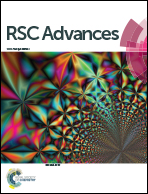CO2 capillary trapping behaviour in glass sand packed heterogeneous porous media during drainage and imbibition revealed by magnetic resonance imaging
Abstract
Geological CO2 sequestration is considered to be a promising technique for mitigating anthropogenic CO2 emissions. The study of the trapping mechanisms is of great importance for understanding the storage potential and safety. Capillary trapping is one of the major trapping mechanisms of CO2 storage in saline aquifers that relates to the capillary number. In this work, we used magnetic resonance imaging to investigate the capillary trapping behavior of gaseous or supercritical CO2 in a water saturated sand pack. Fluid was injected into packed bed to investigate how capillary number impacts upon residual saturation at reservoir pressure and temperature. Porosity and water distribution were evaluated by using the intensity analysis of magnetic resonance imaging. Water saturation was directly obtained from MRI intensity during drainage and imbibition. Variation of water and CO2 saturation was discussed under different fluids injection volumes and capillary number. From the results, we can see that under same CO2 phase state, the residual CO2 saturation retains at a relative stable value despite how the capillary number changes during drainage and imbibition. The sweep efficiency of gCO2 was lower than scCO2 and the residual scCO2 saturation far exceeded residual gCO2 saturation. Capillary desaturation curves give residual saturations as a function of capillary number.


 Please wait while we load your content...
Please wait while we load your content...